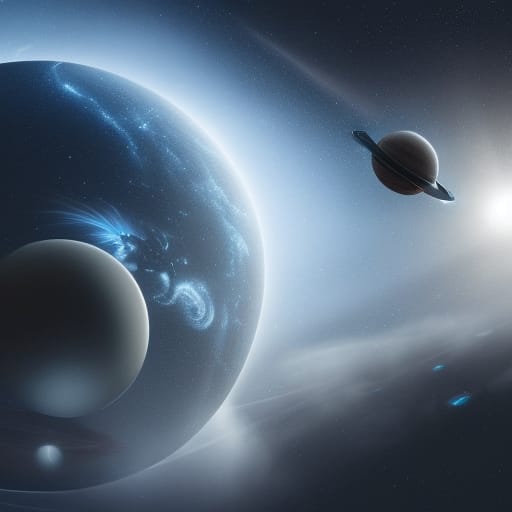Space: Solar System

The solar system is a collection of celestial bodies, including the Sun, planets, dwarf planets, moons, asteroids, comets, and other small objects, bound together by gravity. Here are the important aspects of the solar system:
Structure: At the center of the solar system is the Sun, which accounts for 99.86% of the total mass. Orbiting the Sun are eight planets, which are divided into two main groups: the inner terrestrial planets (Mercury, Venus, Earth, and Mars) and the outer gas giants (Jupiter, Saturn, Uranus, and Neptune). Beyond Neptune lies the Kuiper Belt, a region of icy objects, including dwarf planets like Pluto.
Formation: The solar system formed approximately 4.6 billion years ago from a massive cloud of gas and dust known as the solar nebula. Gravity caused the nebula to collapse, with the densest region forming the Sun and the remaining material forming a protoplanetary disk. Over time, this material coalesced into the planets, moons, and other objects we see today.
Asteroid Belt: Located between the orbits of Mars and Jupiter, the Asteroid Belt is a region containing millions of asteroids, which are small, rocky bodies leftover from the solar system's formation. The largest asteroid, Ceres, is also classified as a dwarf planet.
Kuiper Belt and Oort Cloud: The Kuiper Belt is a region of icy objects beyond Neptune's orbit, including Pluto and other dwarf planets. The more distant Oort Cloud is a hypothesized sphere of icy bodies that is thought to be the source of long-period comets. Both regions contain remnants from the early solar system.
Moons: Most planets in our solar system have natural satellites, or moons, that orbit them. Earth has one moon, while Mars has two small moons, and the gas giants have numerous moons, with Jupiter and Saturn having over 80 each. Some moons, like Europa and Enceladus, are of particular interest due to their potential for harboring subsurface liquid water.
Comets: Comets are small, icy objects that orbit the Sun in highly elliptical orbits. When they approach the Sun, the heat causes their ice to vaporize, creating a glowing coma and tail that can be visible from Earth.
Meteoroids, meteors, and meteorites: Meteoroids are small particles, typically originating from asteroids or comets, that travel through space. When a meteoroid enters Earth's atmosphere, it burns up, creating a streak of light known as a meteor or shooting star. If a meteoroid survives its passage through the atmosphere and reaches Earth's surface, it is called a meteorite.
Space exploration: Humans have been exploring the solar system through robotic spacecraft and telescopes since the 20th century. These missions have provided invaluable information about the planets, moons, and other objects in our solar system, and have allowed us to better understand their formation, composition, and potential for life.
Importance to Earth: The solar system provides the context for understanding our place in the universe. Studying the solar system helps us learn about the formation and evolution of planets, the potential for life beyond Earth, and the fundamental processes that govern the universe.
Future exploration: Ongoing and planned missions to the solar system aim to further our understanding of the planets, moons, and other objects. These missions include landers, orbiters, and flybys, as well as ambitious plans for crewed missions to the Moon and Mars in the coming decades.